We recently covered the Delta Broadcom Tomahawk 5 CPO switch, but there was another we saw on the OCP Summit 2024 show floor. The Micas Networks M2-W6940-128X1-FR4 is another Broadcom Tomahawk 5 CPO switch with pluggable light sources for 128x 400GbE ports. Another cool aspect is that it was running traffic!
Micas Networks Broadcom Tomahawk 5 CPO Switch Shown
To say there were many Tomahawk 5 switches at the show would be an understatement. This one was a bit different, however, as it was running traffic on the show floor. With the clear top cover, it also had a crazy liquid cooling loop coming out of the top of the chassis.
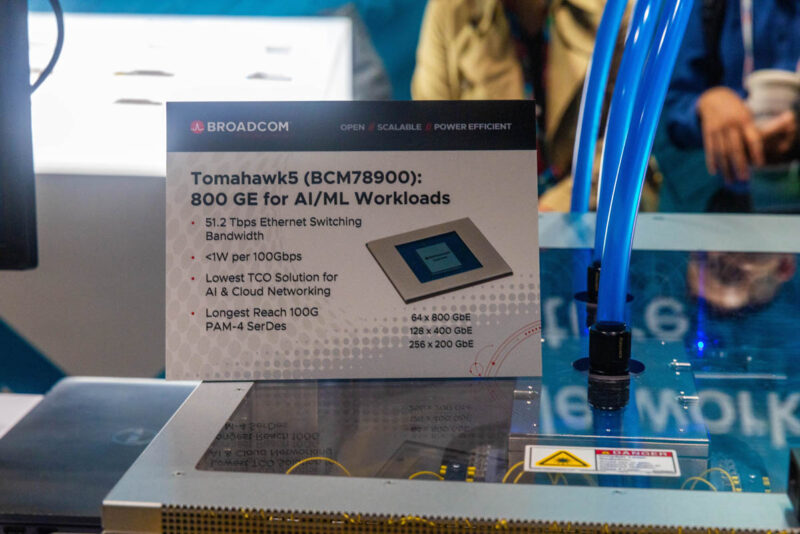
That went into the Broadcom 51.2T Tomahawk 5 liquid cooling block.

The co-packaged optics pigtails are connected to the internal single mode cables.
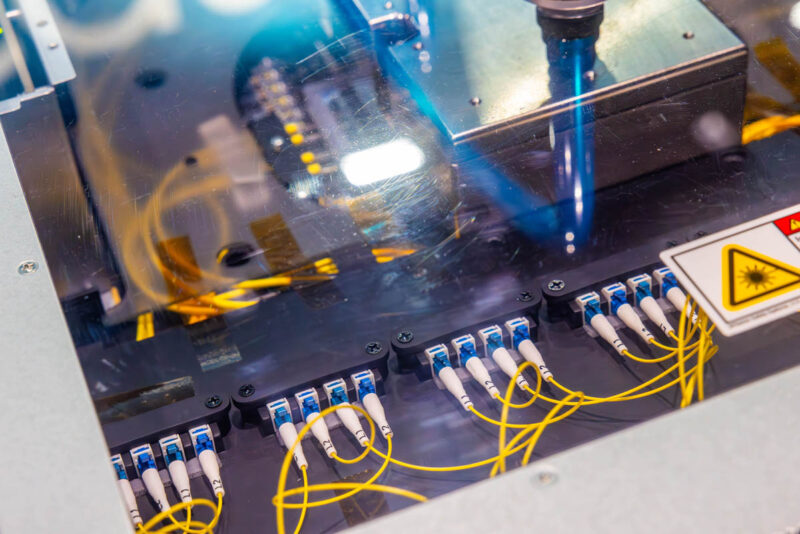
These then connect to the front panel. That allows these segments to be serviced internally and independently from the front panel.
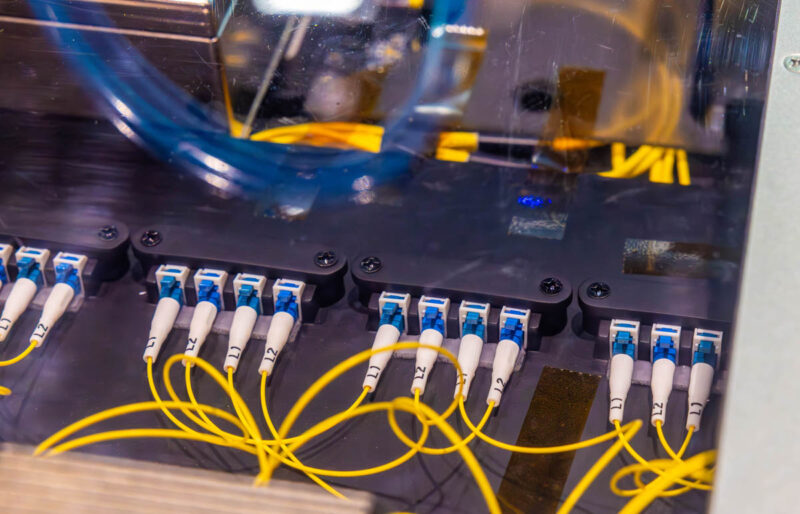
The front has an array of 32 x 4 LC connections for the 128 FR4 links. Below those connections, there are the sixteen pluggable light sources.

This is a 128-port 400GbE switch, and power wise it is a maximum of 1784W including the onboard Intel Xeon D-1734NT management processor. Micas says that this switch can run in the 1300W range. That would be 10.1-10.2W per 100Gbps.
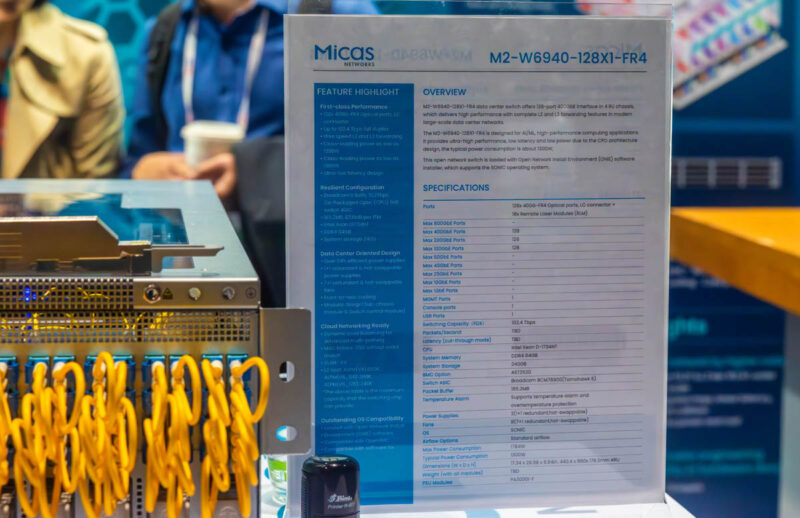
A design like this running on the show floor was cool to see.
Final Words
We know co-packaged optics (CPO) is coming. The pluggable laser modules fix a common failure point in optics and make it easily serviceable. It will be interesting to see how well these switches are adopted or are we going to be waiting for the 102.4T switch generation next year for CPO to make notable inroads.
A fun story is that we have reviewed a switch that Micas Networks makes before. The FS N9510-64D 64x 400GbE switch is a Micas Networks design that FS sells. Micas Networks has an identical switch.

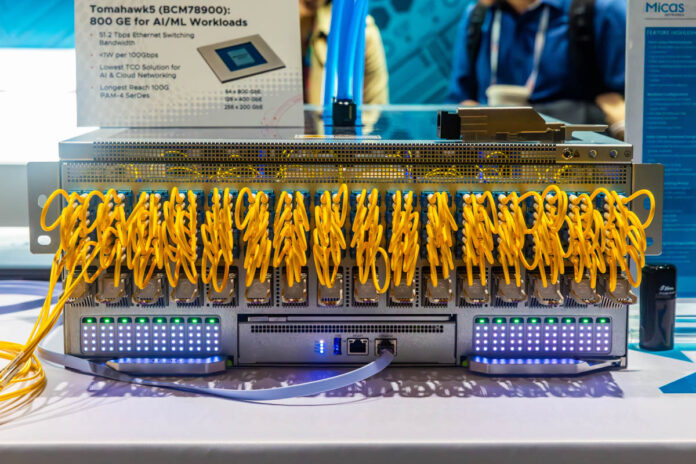



“The pluggable laser modules fix a common failure point in optics and make it easily serviceable.”
This is not a complete sentence.
Or perhaps it’s a poorly structured one? I’m second guessing this now. Feels like it should be instead: “The pluggable laser modules fix a common failure point in optics by making it easily serviceable.”
But making it easier to service doesn’t solve the failure point, just reduces the impact of a failure. Solving it would be making it more reliable, having a higher level of redundancy to handle individual component failures, etc.
Oddly, the sign in the picture says “<1W per 100gbps", implying less that 512W. Elsewhere, a figure about 3x that is mentioned.